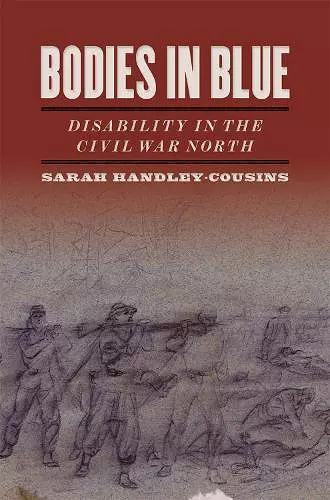Bodies in Blue
Disability in the Civil War North
Format:Hardback
Publisher:University of Georgia Press
Published:1st Jul '19
Should be back in stock very soon

How mental and physical disabilities influenced ideas of masculinity in the Union Army
An innovative look at all of the disabling experiences to which northern soldiers were subjected - physical and mental, in camp and on the battlefield
In the popular imagination, Civil War disability is virtually synonymous with amputation. But war affects the body in countless ways, many of them understudied by historians. In Bodies in Blue, Sarah Handley-Cousins expands and complicates our understanding of wartime disability by examining a variety of bodies and ailments, ranging from the temporary to the chronic, from disease to injury, and encompassing both physical and mental conditions. She studies the cases of well-known individuals, such as Union general Joshua Lawrence Chamberlain, alongside many cases drawn from the ranks to provide a more comprehensive view of how soldiers, civilians, and institutions grappled with war-related disability in the Civil War–era North.
During the Civil War and long after, the bodies of Union soldiers and veterans were sites of powerful cultural beliefs about duty and sacrifice. However, the realities of living with a disability were ever at odds with the expectations of manhood. As a consequence, men who failed to perform the role of wounded warrior properly could be scrutinized for failing to live up to standards of martial masculinity. Under the gaze of surgeons, officers, bureaucrats, and civilians, disabled soldiers made difficult negotiations in their attempts to accommodate impaired bodies and please observers. Some managed this process with ease; others struggled and suffered. Embracing and exploring this apparent contradiction, Bodies in Blue pushes Civil War history in a new direction.
When we think of Civil War disabilities, our thoughts commonly turn to legions of brave amputees, navigating life with the highly visible marker of their wartime sacrifice. In this deeply researched and theoretically sophisticated book, Sarah Handley-Cousins tells a much more complex story of the illnesses and injuries that Civil War soldiers and veterans endured. . . . This is a story about how individuals and institutions battled over how bodies should be defined and categorized and treated by the state. This is a very important book.
-- J. Matthew Gallman * author of The North Fights the Civil War *In recent years, historians of the American Civil War have increasingly turned their attention to studying the “dark” side of the war: the trauma, the devastation, the ruin, and despair. Sarah Handley-Cousins adds to this growing scholarship with her consideration of the broader social and cultural understanding of war-related disabilities in the Civil War North. . . . Bodies in Blue deserves to be on every Civil War reading list, as it highlights just how much the war affected many of those who fought in it.
-- Angela Riotto * H-SHGAPE *It makes a valuable contribution to the literature by bringing together in one accessible volume several of the approaches taken by historians of recent years, providing a well-written book that could work very well in undergraduate and some graduate courses. The scholarship is deep enough and the coverage is broad enough to give nonspecialists and students a very good introduction not only to the true cost of the Civil War but also to the attitudes of veterans and nonveterans that so powerfully reflected the moral and medical assumptions of the era.
-- James Marten * Journal of African American History *Bodies in Blue is an important addition to Civil War scholarship but also an enjoyable read for anyone interested in the Civil War, veterans, and the medical aspect of the war.
-- Kathleen L. Thompson * The North Carolina Historical ReviISBN: 9780820355184
Dimensions: unknown
Weight: unknown
204 pages